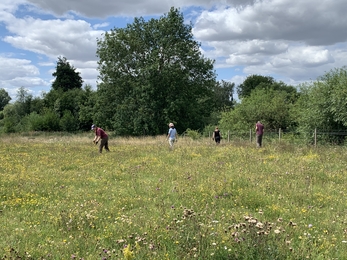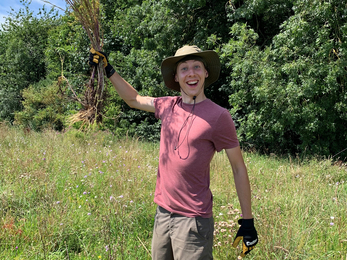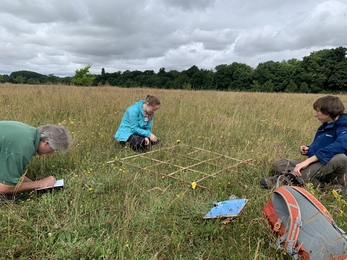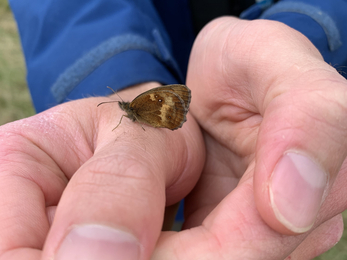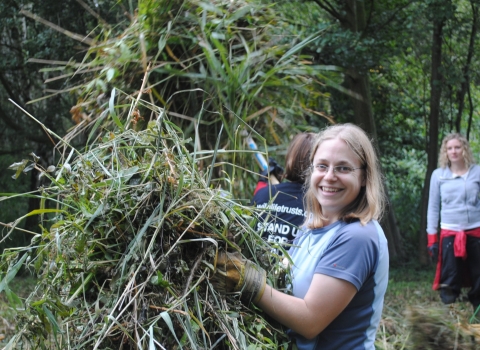I entered into the world of natural history via birdwatching when I was 8 years old. Learning about issues such as persecution, habitat destruction and climate change at a young age motivated me to study ecology at the University of Cambridge and I’m now going into my third year.
A couple of months ago it looked like the pandemic would totally derail all of my plans for gaining more experience, outside of a lecture theatre or library, in ecology and conservation: field trips to Portugal and Panama with the university, had both been cancelled. It was therefore such a relief to see that the team at Trumpington Meadows were still giving the go ahead for the 6-week internship I had secured. The work plan had changed significantly due to a loss of volunteer hours, and the fact that we would be effectively locked out of the office but, at the end of my fourth week, I can say that the experience has been just as enriching and informative as I had hoped for.
A large part of the experience has been practical, hands on habitat management. Trumpington Meadows is based on the site of former plant breeding fields; the soil was prepared and a seed mix designed to emulate dry, unimproved grassland was sewn just over 10 years ago. Changing land-use practices have made this once ubiquitous habitat fairly scarce, so maintaining the meadows and preventing scrub encroachment is hugely important and rewarding work. The most visible management practice is annual hay cutting which prevents nutrient accumulation in the soil, thereby stopping competitors (such as nettle and dock) shading out the meadow herb species. This means a lot of ragwort pulling (in order for the hay to be useable for farmers and not poisonous to livestock) and hay raking. Ragwort pulling is normally polished off by large teams of volunteers, so we had a lot to do. These repetitive practical tasks have been quite therapeutic and a meaningful way to spend time out in nature whilst seeing some choice species; clouded yellow butterflies and a red kite are two highlights for me.

